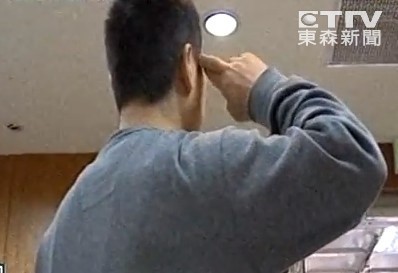There is a saying in Chinese, “You are never deemed as strange by showering people with your over-the-top gestures.” (禮多人不怪). Gestures can be as simple as a hand sign or they can be a type of custom that bears rich cultural connotations. In this article we take a look at examples of common gestures in Chinese society in an attempt to bridge the cultural gaps for those who travel or work in a Chinese speaking countries.
Hand-signals
Across cultures and regardless of geographical borders, some gestures channel a universal message. Examples of this include eye contact, handshakes and the thumbs up sign, which all indicate something positive, encouraging and welcoming. Having said that, not all hand gestures are mutually understood across cultures. Below are a few examples that you would come across often in Chinese society. Knowing these gestures would help to avoid embarrassment and misunderstanding.
 |
Needless to say, this is generally perceived as inappropriate and rude in most societies; however in some Asian countries, such as Taiwan, Japan and China, this hand shape is understood to be adorable, cheerful and friendly. It is extremely popular among youngsters and especially in photos. Next time, when you see a group of teenagers signing this to you, don’t be annoyed; it is as if they are greeting you by saying “peace out”. |
|
In Chinese workplaces, a raised fist is used between colleagues as to wish one good luck. It is a gesture to say, “I have confidence in you, WE can make it! On the contrary, this gesture might come across as provocative and confrontational in some western cultures. |
|
|
In the UK, we cross our fingers to wish one good luck and express hope for one’s dream to come true. However, in Taiwan if you have this hand sign right next to your head above the ear, it is as if you are criticising someone’s sanity or calling them crazy. |
|
 |
Rather than finger clicking, this popular gesture is a sign of giving out tender loving care, it is like “blowing a kiss” as the twisted finger-tips indicate. This is well received and a very trendy gesture in China, Taiwan and South Korea. |
Gestures when dining out
We are approaching the Chinese New Year (CNY), making it ideal timing to talk about the Chinese culture surrounding eating and gestures - in case you are invited for a celebration.
For CNY, the big meal is eaten late on New Year’s Eve, unlike the Brits eating Christmas dinner at lunch time on Christmas Day. The symbolic dishes are a Hot Pot circled by an even number of dishes (discounting “four” owing to its similar pronunciation to “death” in Chinese). The Hot Pot is the focal point here, as family members would circle around this dish on the round table - round shapes like circles are a sign of reunion and eternity (圍爐團圓). Similarly, even numbers indicate “pairing up” and “joining together so you are never alone”.
In the northern provinces of China, instead of or in addition to Hot Pot, families would serve “dumplings (餃子)” as a symbolic dish. Like Galette des Rois in France, whoever happens to get a bite on the dumpling with a hidden coin inside is blessed with all sorts of luck and fortune in the new year to come.
At the dinner table, if you need to take a moment from the food, it is best to put the chopsticks down on the table. It is extremely impolite if chopsticks are left vertically on a dish or rice bowl. Only dead people are served with vertical scented sticks during religious prayers so vertical chopsticks is a curse and taboo.
When being invited to the Chinese New Year’s gathering, it is worth remembering to dress in bright and warm colours. Red and gold colours are always very welcome, so try to avoid darker colours such as black or royal blue; unfortunately white is also a no-go colour during the CNY period due to its association with funerals.
Lastly, it is a custom to gift a Red Envelope with cash (Money Envelope) for CNY. It is given by the senior members of the family to the juniors. However, if you are married or have started working, then it will be the other way round. Married junior members of the family or working family members will in return gift their seniors with the red envelopes as a token of gratitude and a sign of readiness of taking on responsibilities of looking after the household in return.
2021 is the Year of the Ox. The Ox symbolises hardwork and perseverance. Isn’t it just as what we say here, Keep Calm and Carry On. So Happy Chinese New Year everyone 恭喜發財 牛轉乾坤 大吉大利!
Get in touch today if you are interested in learning Mandarin or Cantonese language and Chinese culture for work or social purposes.




